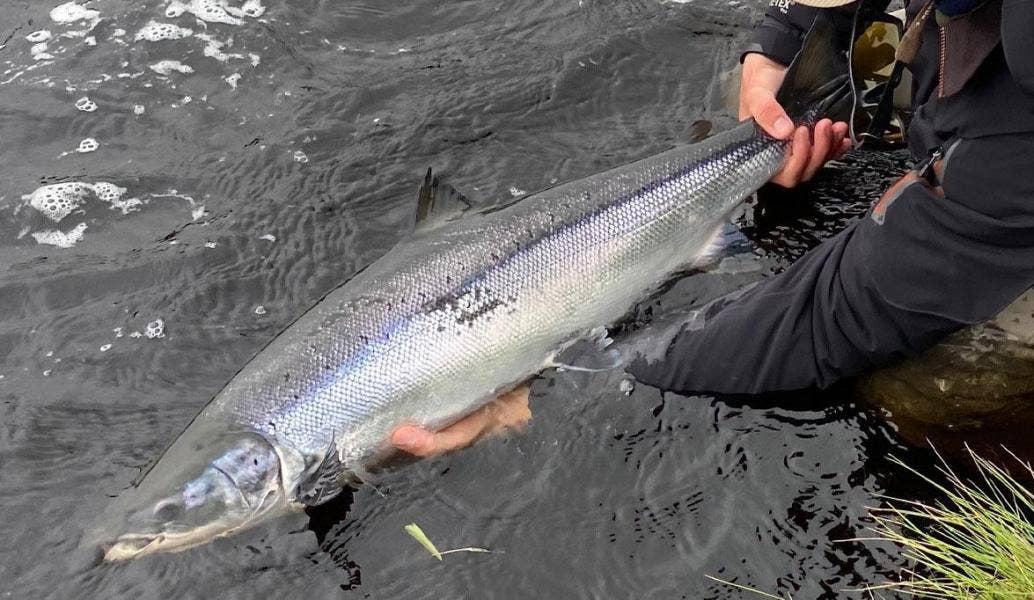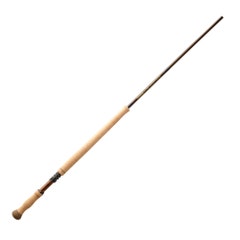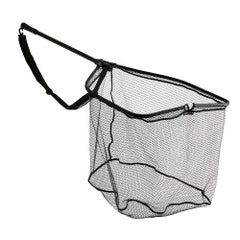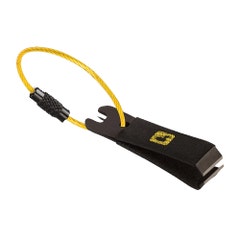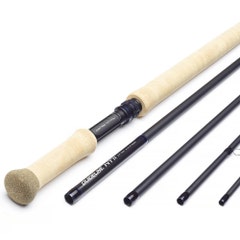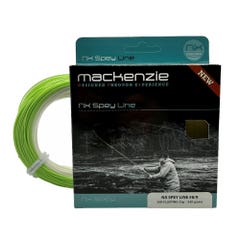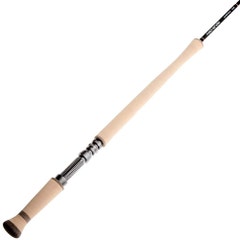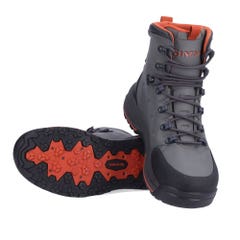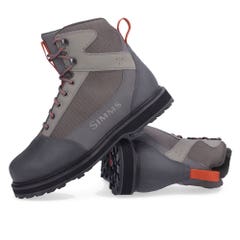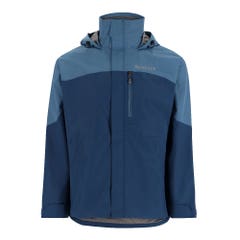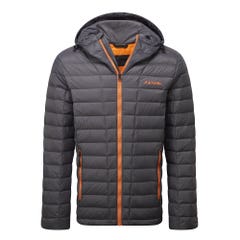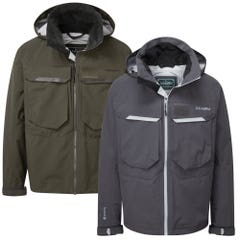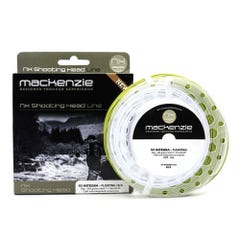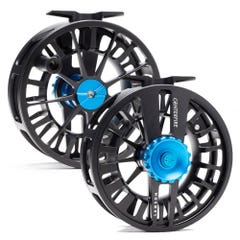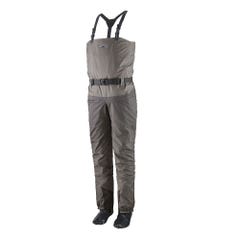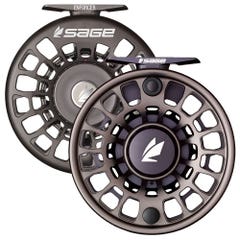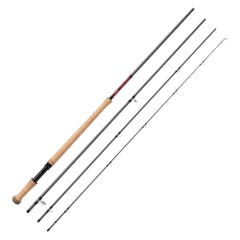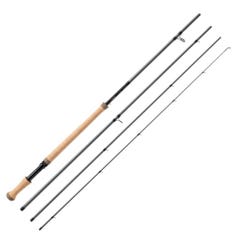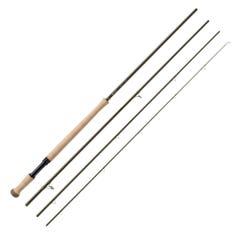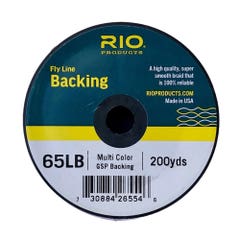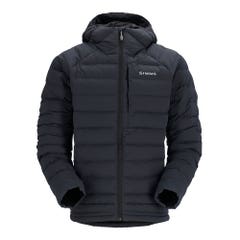Jonny Muir looks ahead to the new salmon season and offers some timely early season advice.
The 2019 salmon fishing season has officially started with the opening of the January rivers: the Helmsdale, Thurso, Naver and other northern systems, as well as the River Tay and Tummel. After a 2018 season that most of us would like to forget it was hugely encouraging to see an opening day springer landed on the Portnacraig Pitlochry beat of the Tummel, a fine specimen of 16lb in addition to another fish caught in the Tay itself, a 14-pounder from Stobhall. A few days later came another first fish from the Naver, giving us all hope for a good spring run. It is of course far too early to predict the season ahead, but it’s certainly a much-needed confidence boost to see fresh fish caught in the first week of the season!
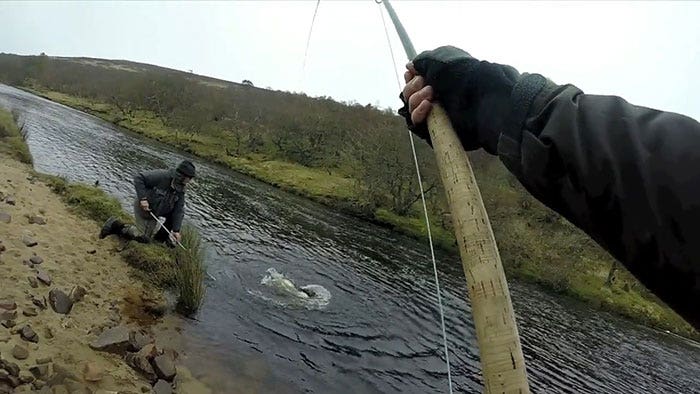 Landing a Helmsdale springer
Landing a Helmsdale springerLet’s talk about last season…
We had it tough, there’s no doubt about it! A brutally cold spring gave way to a seemingly never-ending heatwave and that made for some of the toughest salmon fishing conditions imaginable. Add to that the poor runs of fish throughout most of the year, whether a result of prolonged low-water conditions or some other cause, you’ve got a season that most of us won’t look back fondly upon.
Towards the end of the season, however, there were some signs of encouragement with fresh fish creeping into our rivers as the rains returned in September and catches on some systems improved just before the final whistle. The Ness District Salmon Fishery Board who have been documenting spawning salmon with underwater cameras for the past few seasons have been recording healthy numbers of fish cutting redds throughout the winter, and an increase in the amount of redds recorded in some areas. We mustn’t get our hopes up of course but these signs are certainly encouraging. Perhaps the drought caused fish to run late and we simply missed a lot of them? Who knows?
Your Guide to the 2019 Salmon Season
Now it’s time to tackle up for 2019 and make this season one for the books.
If you’re heading out early-doors there are two important things to bear in mind; the way you search for fish and how to protect yourself from the elements. Plus you can find our full list of recommended salmon fishing tackle and clothing online.
Searching for a Springer
It’s fair to say that, in January and February, our rivers are not exactly stuffed with fish! With the exception of kelts which can provide a much-needed tug on the line, any fresh ‘new’ fish are going to take some finding. An important first step in locating a springer is to identify the presence of temperature barriers. When deciding where to fish, consider whether it’s likely that fish will have ascended barriers such as waterfalls and weirs this early in the season. It’s true that springers run hard and the upper beats on many rivers fair best in the spring, but it’s unlikely that fish will navigate serious obstacles at this stage in the game. Look for mini-obstacles at your chosen fishing location too: rapids, shallow bars and small weirs. Concentrate your efforts below these features where you feel a lone fish may have stopped for a breather.
Given the low probability of a group of fish resting in one lie, early season salmon fishing calls for a mobile approach - cast and move, cast and move. You’re looking for the perfect moment when your fly catches the eye of a passing fish, where the morsel simply looks too good to miss. This mobile approach calls for tackle and flies that maximise our chances of catching attention.
 Helmsdale Valley early season
Helmsdale Valley early seasonSalmon Fly Line Choice
Interchangeable salmon fly line and tip systems are king in the early part of the season, enabling us to explore different depths where fish may be running. It pays to remember that the top layer of water is often the coldest, making fish reluctant to rise to a fly if it means leaving the more comfortable layer that they are travelling in. Lines such as the RIO Scandi VersiTip with interchangeable 15ft sink tips help you get your fly into the zone without the need for a full-sinking line and are a great choice for medium-sized rivers. If you find yourself on a larger river such as the Tay, with a powerful current and greater depth, triple density shooting heads are the way forward. Guideline’s Power Taper 3D+, Hardy’s Scandi Rocket Shooting Head and Tip Set, MacKenzie’s G3 Phased Density 5 and RIO’s Scandi 3D are all designed to allow you to experiment with different depths and keep your fly swinging through a specific layer of water. You’ll have to tailor your approach to the conditions and water levels on the day, but I wouldn’t go spring fishing without a good selection of tips and heads in my tackle bag.
Salmon Fly Choice
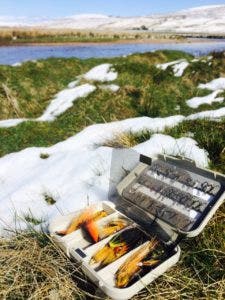 Given that we’re most likely on the hunt for a single fish, I like to use something pretty darn eye catching, whether that means size, shape or colour. Weighted tubes and coneheads will help you achieve depth and a steady swing-speed if the water is racing through at speed. Classics such as the Willie Gunn and Cascade should always be in your box, as should the Posh Tosh – a tasty combination of black and yellow that is a firm spring favourite on many rivers.
Given that we’re most likely on the hunt for a single fish, I like to use something pretty darn eye catching, whether that means size, shape or colour. Weighted tubes and coneheads will help you achieve depth and a steady swing-speed if the water is racing through at speed. Classics such as the Willie Gunn and Cascade should always be in your box, as should the Posh Tosh – a tasty combination of black and yellow that is a firm spring favourite on many rivers.
One of the advantages of using sinking tips and multiple-density heads is that we can use lightweight flies with lots of tantalising movement, whilst still achieving the desired presentation and depth. Try a short leader of no more than four or five feet with a plastic or aluminium Sunray Shadow and retrieve it through the mid-water taking zone. This is a great way of quickly covering water and should appeal to the aggressive nature of early fish.
There are no hard and fast rules, but keeping your fly down in the water, controlling its speed with line choice and mending, maintaining plenty of movement in the fly and covering as much water as possible is probably as good an approach as any!
Dress the Part
Any time spent warming yourself in the fishing hut or huddled in front of your car heater means valuable fishing time lost! Remember, we’re hunting for a lone fish and we really need to maximise the time our fly spends swimming – you never know when that 20-pound sea-licer has just entered the pool.
Staying warm and dry is so important and failure to do so can really wreck a fishing day. Dress in layers and work from the bottom up, starting with good merino wool or synthetic base layers, followed by fleece layers for both top and bottom. Patagonia’s Capilene and R1 ranges are perfectly suited to the task. On top of your fleece layer I like to put on a synthetic insulated jacket such as the Patagonia Nano Puff before climbing into my waders and covering everything up with a Gore-Tex wading jacket. Don’t forget your extremities either – fleece lined gloves make a hell of a difference to your comfort and enjoyment, as does a warm hat and buff.
 Early spring salmon weather can be challenging
Early spring salmon weather can be challengingLast season taught us that there are many things we can’t control, most notably the weather! For me, part of the allure of salmon fishing is that it never can be predicted, no matter what the forecast says or what you hear from the ‘word on the street’. One thing is certain though – a gleaming chrome-fresh spring Atlantic salmon is one of the ultimate prizes in all of fly fishing. I’ll be out there again this year casting a line and rolling the dice, waiting for that reel to sing…
SEARCHING FOR A SPRINGER
Spring salmon fishing refers to the period of the season running from the opening of our first rivers in January, through to the end of May. It’s a great time to be out on the river searching for that most special of salmon fishing achievements - a ‘springer’. Check sites such as FishPal for information, taking particular note of the averages, not just looking at the previous year.
It’s fair to say that, in the early spring season from January to March, our rivers are not exactly stuffed with fish! With the exception of kelts which can provide a much-needed tug on the line, any fresh ‘new’ fish are usually going to take some finding.
An important first step in locating a springer is to identify the presence of temperature barriers. When deciding where to fish, consider whether it’s likely that fish will have ascended barriers such as waterfalls and weirs this early in the season.
It’s true that springers run hard, and the upper beats on many rivers fair best in the spring, but it’s unlikely that fish will navigate serious obstacles at this stage in the game. Look for mini-obstacles at your chosen fishing location too: rapids, shallow bars and small weirs. Concentrate your efforts in pools below these features if you come across them.
 Landing a Helmsdale springer
Landing a Helmsdale springer A Beautiful Helmsdale Springer
A Beautiful Helmsdale SpringerIf your river system doesn’t have any difficult-to-pass obstacles, start your springer hunt in the upper reaches of your catchment, including tributaries and even lochs. The view that ‘rivers fill from the top down’ is one that seems to be largely the case, so focussing your efforts on your river's upper beats is a good approach. As the season progresses, middle and lower river beats will usually start to outperform the upper beats.
Given the low probability of a group of fish resting in one lie, early season salmon fishing calls for a mobile approach - cast and move, cast and move. You’re looking for the perfect moment when your fly catches the eye of a passing fish, where the morsel simply looks too good to miss. This mobile approach calls for tackle and flies that maximise our chances of catching a fish’s attention.
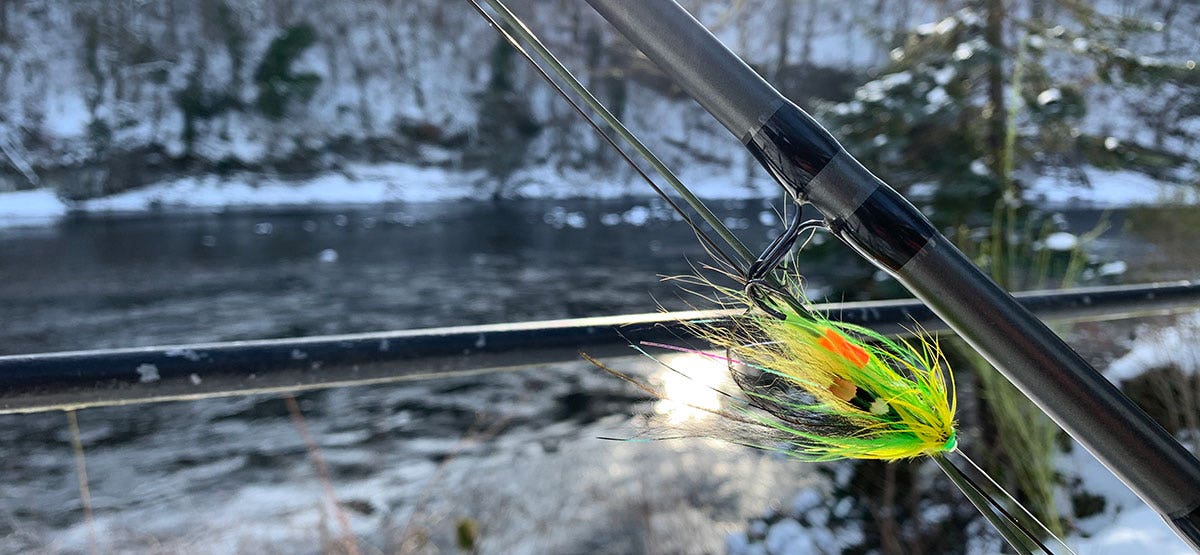 Bright tube flies with plenty of mobile fibres are a great choice for spring.
Bright tube flies with plenty of mobile fibres are a great choice for spring.As spring progresses and more fish start to appear in April and May, we can gradually start to move our fishing approach towards summer tactics. Read on for a general overview of how to prepare yourself for spring salmon fishing.
SALMON FLY LINE CHOICE
Interchangeable salmon fly line and tip systems are king in the early part of the season, enabling us to explore different depths where fish may be running. It pays to remember that the top layer of water is often the coldest, making fish reluctant to rise to a fly if it means leaving the more comfortable layer that they are travelling in.
Lines such as the RIO Scandi VersiTip with interchangeable 15ft sink tips help you get your fly into the zone without the need for a full-sinking line and are a great choice for medium-sized rivers. If you find yourself on a larger river such as the Tay, with a powerful current and greater depth, multiple density shooting heads are the way forward.
Guideline’s Power Taper 3D+, MacKenzie’s G3 Phased Density 5 and RIO’s Scandi 3D are all designed to allow you to experiment with different depths and keep your fly swinging through a specific layer of water. You’ll have to tailor your approach to the conditions and water levels on the day, but you'd be unwise to go spring fishing without a good selection of sinking tips and heads your tackle bag.
As a rule of thumb, the colder the water the deeper and slower you should fish. Pro tip: invest in a thermometer!
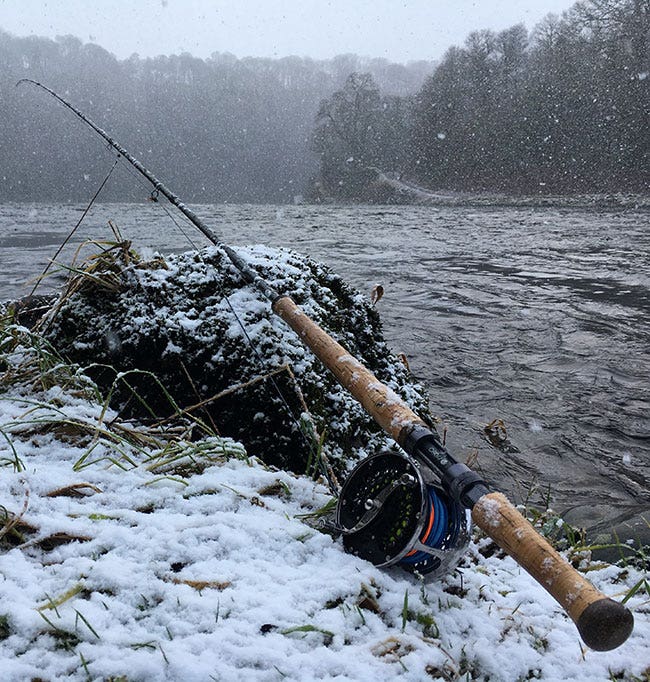

Browse What's New in Our Salmon Gear Range
SALMON FLY CHOICE
Given that we’re most likely on the hunt for a single fish rather than a whole pod of them (as might be the case with summer grilse), don’t be afraid to use something pretty darn eye catching, whether that means size, shape or colour.
Weighted tubes and coneheads will help you achieve depth and a steady swing-speed. Classics such as the Willie Gunn and Cascade should always be in your box, as should the Posh Tosh – a tasty combination of black and yellow that is a firm spring favourite on many rivers.
One of the advantages of using sinking tips and multiple-density heads is that we can use lightweight flies with lots of tantalising movement, whilst still achieving the desired presentation and depth. Try a short leader of no more than four or five feet with a plastic or aluminium Sunray Shadow and retrieve it through the mid-water taking zone. This is a great way of quickly covering water and should appeal to the aggressive nature of early fish. Our range of Frodin Flies is also packed with cracking spring fly choices with plenty of movement.
There are no hard and fast rules, but keeping your fly down in the water, controlling its speed with line choice and mending, maintaining plenty of movement in the fly and covering as much water as possible is probably as good an approach as any!
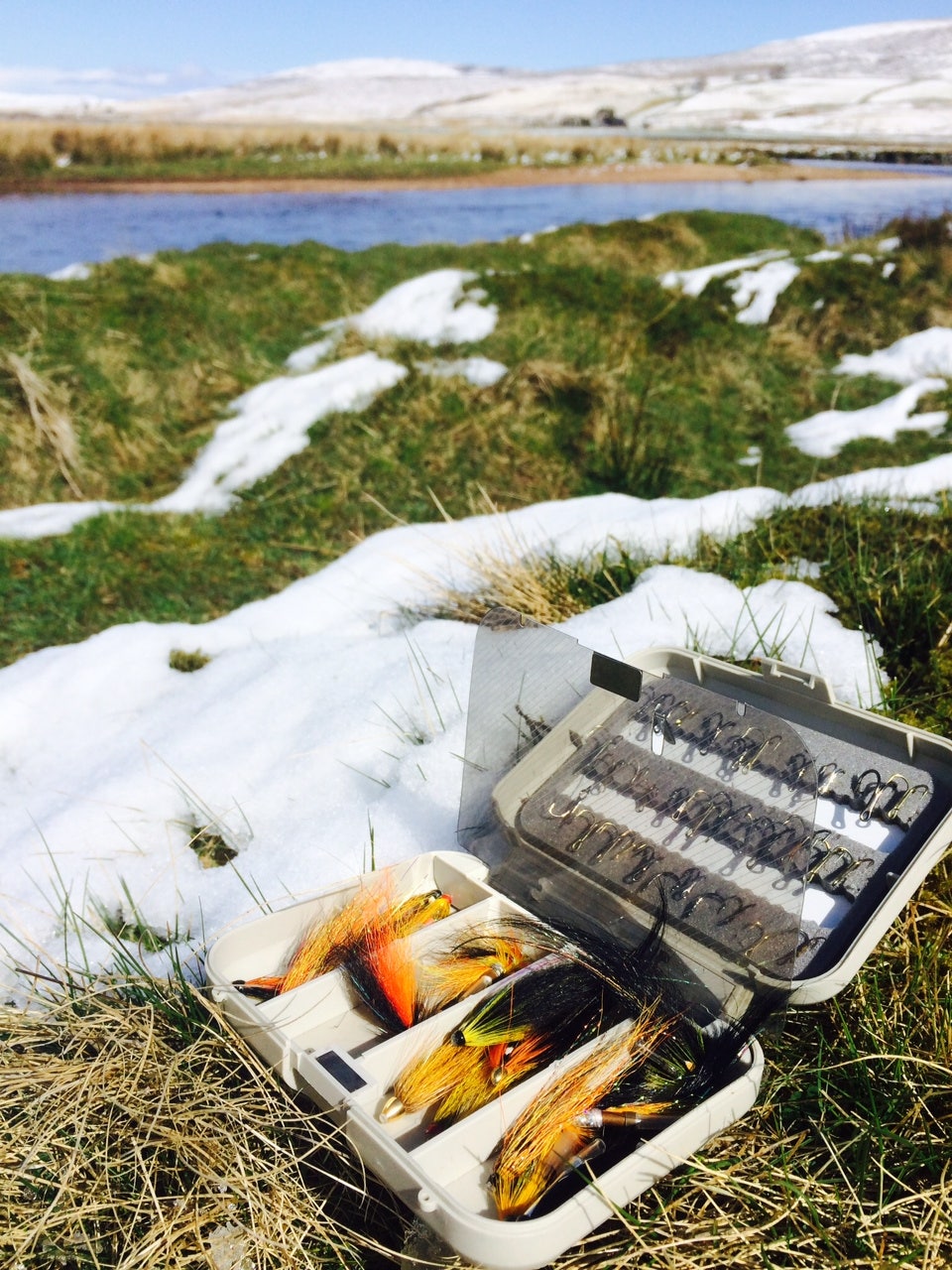

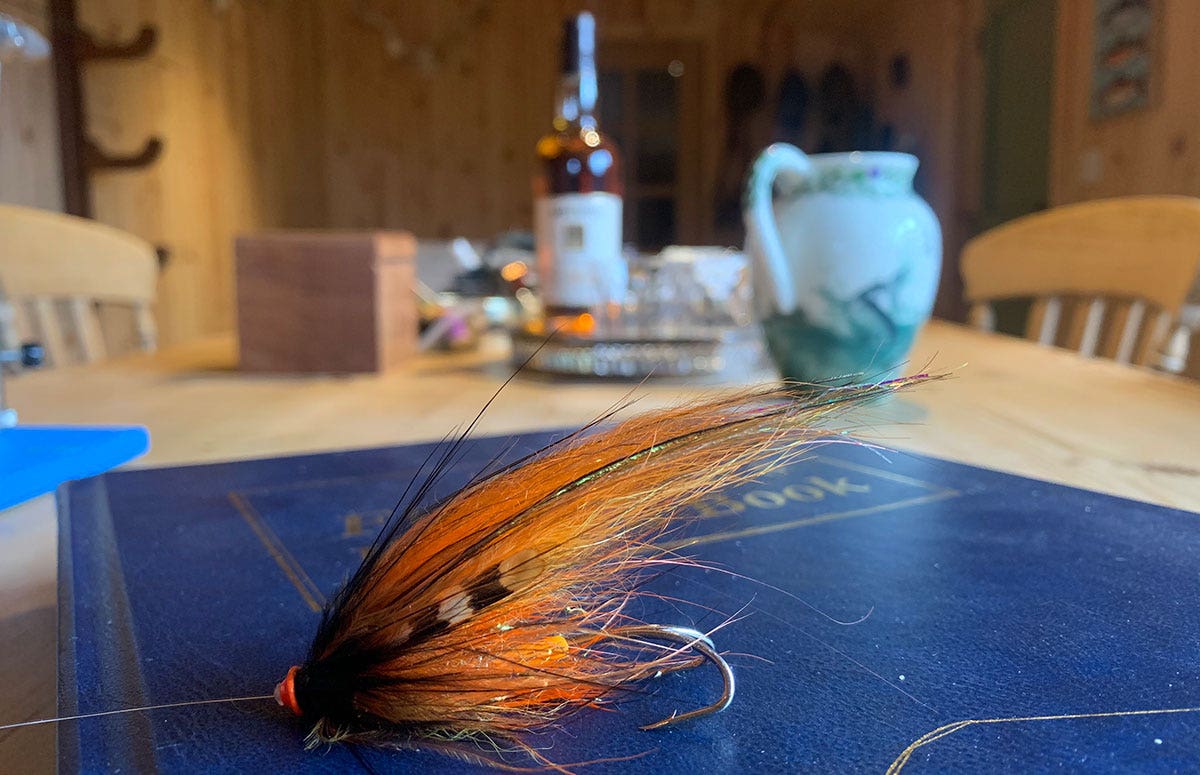 Long winged salmon flies with plenty of movement are great in the spring.
Long winged salmon flies with plenty of movement are great in the spring.DRESS THE PART
Any time spent warming yourself in the fishing hut or huddled in front of your car heater means valuable fishing time lost! Remember, we’re hunting for a single fish and we really need to maximise the time our fly spends swimming – you never know when that 20-pound sea-licer has just entered the pool.
Staying warm and dry is so important and failure to do so can really wreck a fishing day. Dress in layers and work from the bottom up, starting with good merino wool or synthetic base layers, followed by fleece layers for both top and bottom. Patagonia’s Capilene range is perfectly suited to the task. On top of your fleece layer I like to put on a synthetic insulated jacket such as the Patagonia Nano Puff before climbing into my waders and covering everything up with a Gore-Tex wading jacket. Don’t forget your extremities either - make a hell of a difference to your comfort and enjoyment, as does a warm hat and buff.
Clothing
Modern fishing clothing like modern tackle is a marvellous thing, the lightweight, warmth and durability of the material is incredible. Gone are the days of big heavy jackets. The modern approach for cold weather fishing is to layer-up with several light layers. The bottom layer is going to wick perspiration and water away from the body keeping your skin dry. On top of this is a fleece layer which will absorb water molecules but trap in warm air near to your body. On top of these two layers you will need a shell, something to keep the rain and wind off. Many of the new jackets and over trousers are fully waterproof but still able to allow our bodies to breath by letting water vapour escape. They also come with any number of pockets and you may no longer need a tackle bag.
The beauty of the layering method of keeping warm is when the weather improves you can shed layers very easily and carry on fishing in comfort – you are after all there to enjoy yourselves! Don’t forget to protect yourself from the sun in the summer as water doubles the intensity of harmful UV light.
Waders & Boots
Waders generally fall into two categories; boot-foot (with a boot permanently attached) or stocking-foot (the angler can choose any boot to go on the wader and these boots offer superior support). Like clothing, modern waders are a revelation. Having owned one to two sets of waders in my time for fishing and also wildfowling, my suggestion would be to go for chest waders with zips as you never know when the call of nature is going to strike! Many people still choose neoprene for winter fishing but with the quality of undergarments available, I would rather have a lightweight wader combined with good quality thermals.
When choosing your boot-foot wader or boots it’s important to pay attention to the soles. The two commonly seen options are felt or streamtread (similar to vibram). Felt offers excellent grip on rock but can be slippery on grass, whilst Streamtread is great on grass but doesn’t offer much grip on slippery wet rock. Both of these materials benefit hugely from the addition of studs and these can be fitted very easily as after-market products and replaced when they wear out.
Other important items to consider for wading include a wading stick and a life-jacket. Wading sticks are important for improving stability and balance and also for feeling your way as you move around the river. Ensure you only wade where you can see the bottom and make sure you pay attention to the rivers current and potential changes in water levels due to rain. Foam and bubbles floating down stream is a sure sign that rain has fallen upstream. Whilst life-jackets may look undesirable they are something that could well save your life one day. Here at Sportfish we recommend that our customers choose automatic models so if you bang your head, or get caught in a current the life-jacket will keep you buoyant and very importantly, turn you the right way up.
Eye Protection
As with all fishing you must wear eye protection to guard against fast flying hooks. They will also enable the angler to spot far more fish. For poor light conditions such as early or late season, or early and late in the day sunrise/yellow lenses are unbeatable. For general day time salmon fishing copper lenses work effectively for most conditions and are a great go to lens for most UK angling.
 Early spring salmon weather can be challenging
Early spring salmon weather can be challengingSPRING SALMON LINGO
You might hear some interesting terms for salmon on the riverbank during the early spring. Here are a few to remember:
- Kelt – a fish which has spawned last season and is starting to regain condition before its return to the sea. Generally caught at the beginning of the season it is likely to be very thin, it may have gill maggots, a distended vent and have some damage to the bottom of the tail (from cutting redds). It’s important to handle and release kelts quickly with minimal fuss - we want them to come back and spawn again in a future season! If you can, don’t handle kelts at all - just unhook in the net and release.
- Baggot – a female fish which hasn’t spawned and has remained in the river through the winter. It will have a soft belly and be a slightly off-silver colour.
- Rawner – a male salmon which hasn’t spawned and has remained in the river.
- Springer – The real deal! A fresh salmon that has just entered the river, silver, fat and full of energy!
VIDEO REWIND
Watch former Sportfish tuition manager, Tom Festing's, two part guide to spring salmon fishing
TOP TIPS FOR SPRING SALMON FISHING
- First off, remember that you will fish most effectively and enjoy your day more if you are dressed properly. Make sure your waders aren’t leaking and check and replace studs if necessary. Carry a wading staff if you need some extra help with your footing and ensure your life vest has been checked and serviced. Make sure you have comfortable, warm and waterproof clothing
- Look at the weather forecast and study the catch returns before deciding what river to fish and always liaise with the ghillies on your chosen beat. They know the water and how it responds in differing conditions better than anyone.
- When you are on the river make sure that you fish at the correct time of day. To maximise your chances you should ensure you are fishing during the period of highest air temperature - often from lunchtime into early afternoon. Leave those long lunches until the height of summer!
- Listen to the ghillies, you don’t know where the lies are – they do. Don’t start wading until you have their information, even if it is a river you know well it may have changed since you last visited - and there could well be fish under your feet!
- Have an understanding of the water temperature. Generally speaking, the colder it is the deeper you should fish.
- Concentrate on the necks and tails of pools for fish resting up before moving through.
- Choose salmon flies that have movement in them. The Scandinavians fish long-winged flies in cold conditions and any movement you can add to your fly can only help to catch the eye of a passing fish.
- Don’t get bogged down fishing slowly through your favourite pool. You are hunting for fish rather than knowing where they are, so fish quickly, cover a lot of water, re-visit areas and search out all of the likely spring lies.
- Finally, whether you are a salmon fishing newcomer, an improver or an old hand, it always pays to take advantage of some tuition. No matter how good your casting ability, you can always learn new techniques and iron out any problems. Call our team of instructors at the Sportfish Game Fishing Centre on 0118 930 3860.
If you would like further advice on spring salmon fishing, then give the Sportfish Game Fishing Centre a call on 0118 930 3860. Alternatively for salmon tackle advice and placing an order over the phone, please call our Winforton team on 01544 327 111.
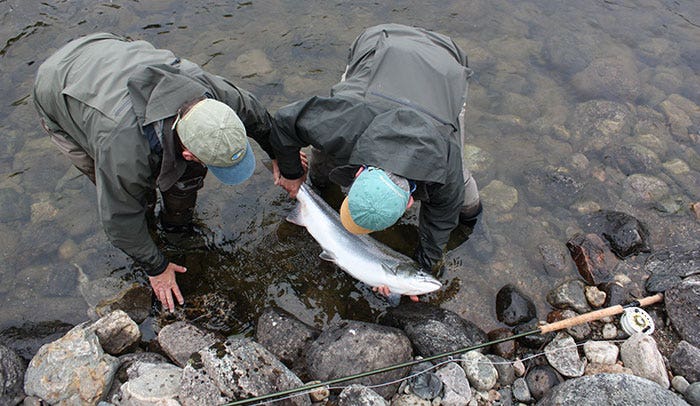 Releasing a stunning salmon
Releasing a stunning salmonPlan Your Next Salmon Trip
Itching to get back on the river? Our friends at FishPal can make it happen! With access to some of the best beats available, you can also find out information about water levels and the latest catch reports.

